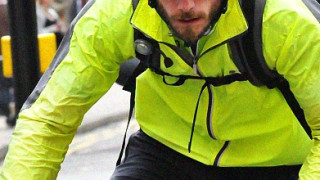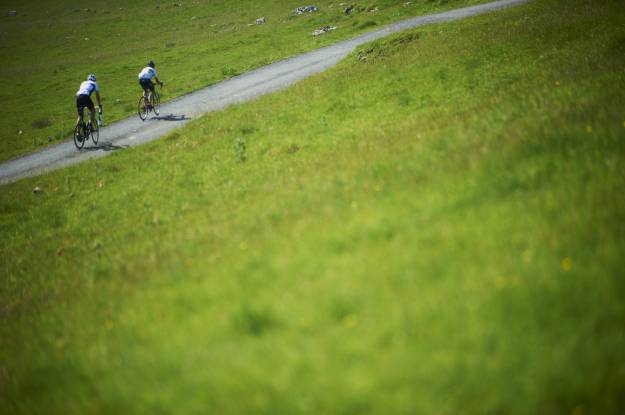Now that we are over the festive period some of you will be getting your bikes out in the hope of losing a few pounds and improving your level of fitness. Here's some great advice sent in by one of our readers, George Matthew. If you've got any cycle commuting tips on safer cycling, bikes or kit, send them to editor@britishcycling.org.uk with Commuting Tips in the subject line.
But before jumping on your bike and riding off let’s first consider how motorists perceive us and what we can do to keep ourselves safe on the road.
I’m sure most motorists think that cyclists should cycle right up against the kerb to make it easier for them to overtake without having to wait until there’s no traffic coming in the opposite direction. As a cyclist we don’t want any motorised vehicle to get too close to us so we need to think how we can create space around us.
Here are a few potentially life-saving tips on how to create space around you:
Don’t cycle too close to the kerb – cycle about an arm’s length from it (just missing the drains). This is known as the ‘secondary’ or normal riding position and tells drivers that you are happy for them to overtake.
Always look at least 25 metres in front of you so you have time to negotiate any hazards.
Look over your right shoulder every 8 to 10 seconds to know what’s behind you – if motorists think you are going to do something they will normally slow down and give you space. If you find it difficult to look over your right shoulder buy a mirror and fit it to the end of your handlebar.
Avoid getting yourself into a ‘pinch’ point, where a car comes too close to you. This can happen when overtaking a parked car, approaching or turning at a junction - and especially when passing a pedestrian island where the width of the road reduces.
As you approach an obstacle or a potential ‘pinch’ point, look over your right shoulder to check for traffic. If there is nothing coming, move across into the ‘primary’ road position (middle of your lane) which tells the driver that there isn’t enough room for you to be overtaken. Then, once you have successfully negotiated the obstacle in front of you and the road widens, move back into the ‘secondary’ position to allow the traffic to overtake you.
When approaching a junction, again look over your right shoulder to check for traffic:
If turning left or going straight on, move into the ‘primary’ road position but don’t forget to give way if you are joining a major road. This should ensure the driver waits behind you, giving you a clear view of traffic all round the junction. Stay in the ‘primary’ position until you have completed the turn, and the road in front of you is clear and wide enough for you to return to the ‘secondary’ position.
If turning right, again look over your right shoulder to check for traffic, signal and move to within an arm’s length of the centre line. Give way to oncoming traffic and look over your right shoulder again (this is called the ‘life saver look’) to make sure you are not being overtaken on the wrong side before making the turn.
It’s important to know just when to move from a ‘secondary’ to a ‘primary’ position to create that all important space around yourself. You need to start having a quick look over your right shoulder at least 25 metres before reaching a parked car or approaching a junction. This will allow you time to filter into the traffic to take up your ‘primary’ position. If you leave it too late, you will end up being trapped on the kerb or behind a parked car. But, don’t move into a ‘primary’ position any earlier than necessary, to avoid frustrating the traffic behind you.
If you remember the following 4 C’s you won’t go far wrong:
Can I be seen? – wear something bright during the day and have good front and rear lights at night. Avoid weaving in and out of parked cars, and look out for drivers that might open their car door in front of you.
Can I see? – always start from a position where you can see in both directions – move away from the kerb if you have to start from between parked cars so you can see in both directions and don’t start off on a corner because a car could come round it just as you set off.
Communicate – having a quick look over your right shoulder tells you whether there is anything behind and gives you eye contact with motorists. Eye contact when passing a side road is also important; because you then know that a motorist has seen you and should give you priority (right of way). Remember, motorists don’t always follow the Highway Code when it comes to cyclists, so when turning out of a side road never trust an indicator, wait until the motorist has completed the turn so you can then see clearly in both directions before pulling out.
Control the space around you to avoid getting into a ‘pinch’ point.
Want to find out more about Cycle Training? Go here.
If you've got any cycle commuting tips on safer cycling, bikes or kit, send them to editor@britishcycling.org.uk with Commuting Tips in the subject line.










